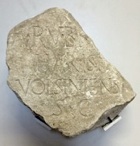Chiesa del Gonfalone (16th-18th centuries)
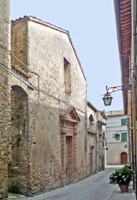
This church and the adjacent oratory belonged to the Confraternita del Gonfalone, which was formed in the 13th century and incorporated in 1586 to the Arciconfraternita del Gonfalone in Rome.
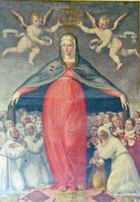
The oratory was adapted as the Teatro della Concordia in the 19th century, but was superseded in 1886 by the Teatro Francesco Torti, which opened in the ex-Palazzo dei Consoli.
Santa Maria della Consolazione (1735)


This was the church of the Confraternita della Misericordia.
Risen Christ (late 16th century)

Holy Family (1738)
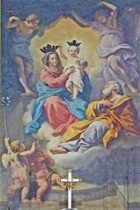
Santa Maria in Laurenzia (13th century)
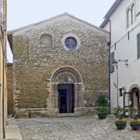
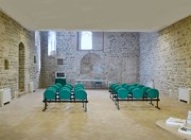
According to tradition, this church was founded in 1249 when Bevagna rebelled against Foligno and destroyed a number of the fortresses that belonged to the Counts of Antignano, among which was the fortress of Santa Maria in Laurenzia. The families who had lived there moved to Bevagna and built this as their parish church. However, the earliest surviving reference to it dates to 1293.
A shrine in Via Madonna delle Grazie (see Walk II) records the murder by the Fascists of Michele Lilli, the priest at Santa Maria in Laurenzia, in 1944.
The church is now deconsecrated and houses the “Pro Loco”. Its interior has been irreparably damaged, although the tiny pensile apse survives.
Exterior

The travertine oculus in the sandstone façade seems to be original, albeit that it is off-centre.
Madonna della Rosa (1691)
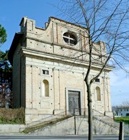
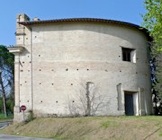
This church was built to house a miraculous image of the Madonna and Child, in which the baby Jesus held a rose. The exterior is in the form of a semi-ellipse, while the interior (no longer accessible) has an octagonal plan. It was partially restored after the earthquake of 1997 but has long ceased to function as a church.
San Vincenzo (12th century)
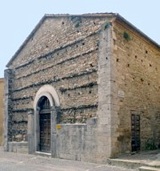
The first church that was dedicated to St Vincent, the patron saint of Bevagna, was apparently destroyed by the Lombards. Its successor was documented outside the town walls in 1135. It was subsequently demolished and its dedication was moved to this church, which housed a community of canons. The baptistery of Bevagna was moved from San Vincenzo to San Michele in 1377, presumably because San Vincenzo was damaged when the Trinci sacked the town. It seems never to have recovered. The church was used as a cinema for a period, but was destroyed by fire in 1986.
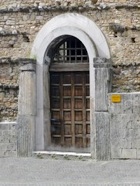
Art from San Vincenzo
Crucifixion (15th century)
This fresco fragment, which was probably destroyed in 1986, was attributed to the young Pierantonio Mezzastris. A surviving black and white photograph depicts the crucified Christ with angels,with St John the Evangelist and a bishop saint (presumably St Vincent) to the right. A lady on the left presumably supported a figure of the swooning Virgin that had been lost by the time that the photograph was taken.
Latin Inscription (1st century BC)
A RUBR[IUS - F.]
HARISPE[X]
VOLSINIENSI[S]
S(ENATUS) C(ONSULTO)
The senate had decreed the posting of this inscription in honour of Aulus Rubrius, a haruspex (a priest who read the future by examining the entrails of sacrificed animals) from the Etruscan city of Volsinii. [This inscription is now in the Museo Archeologico].






